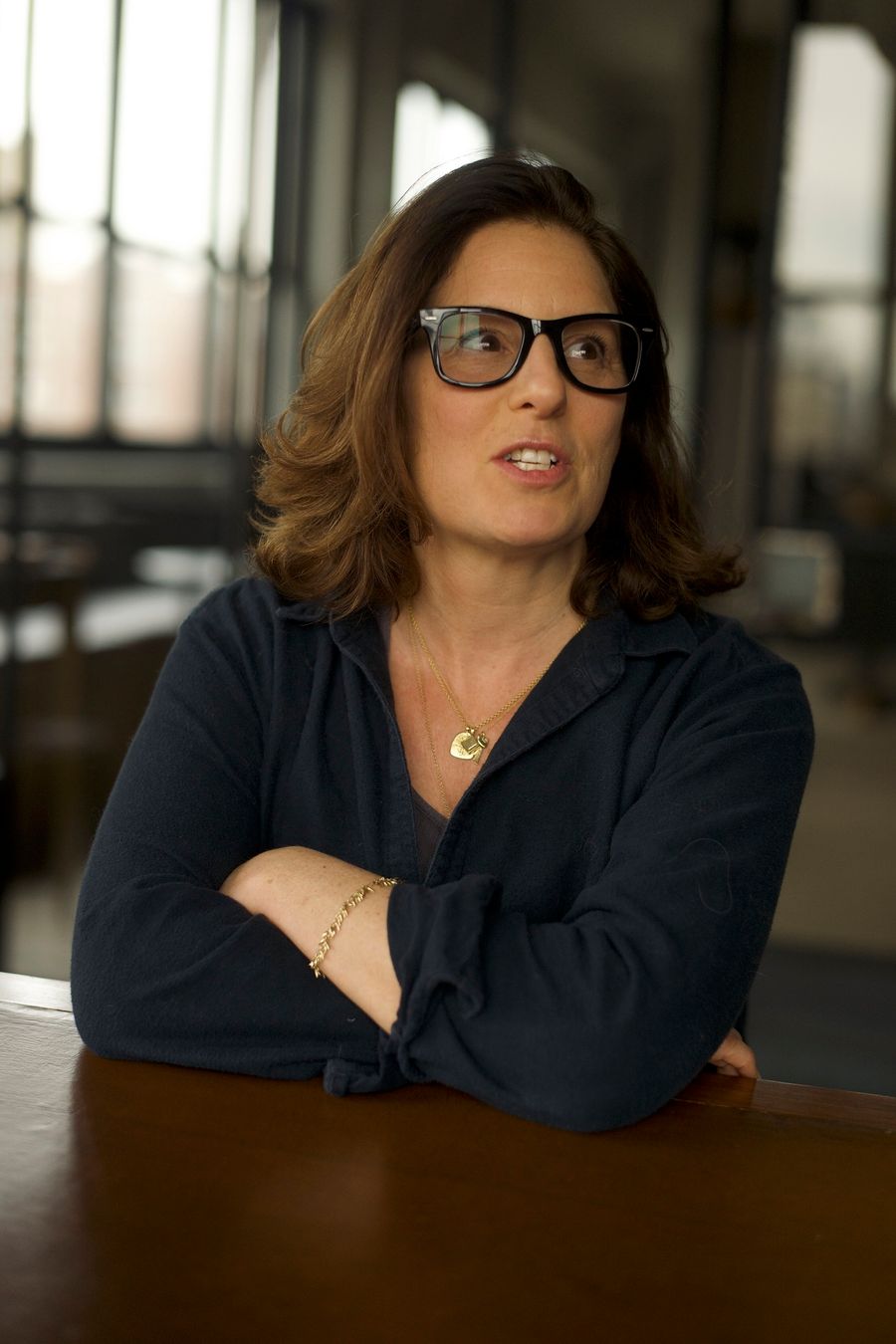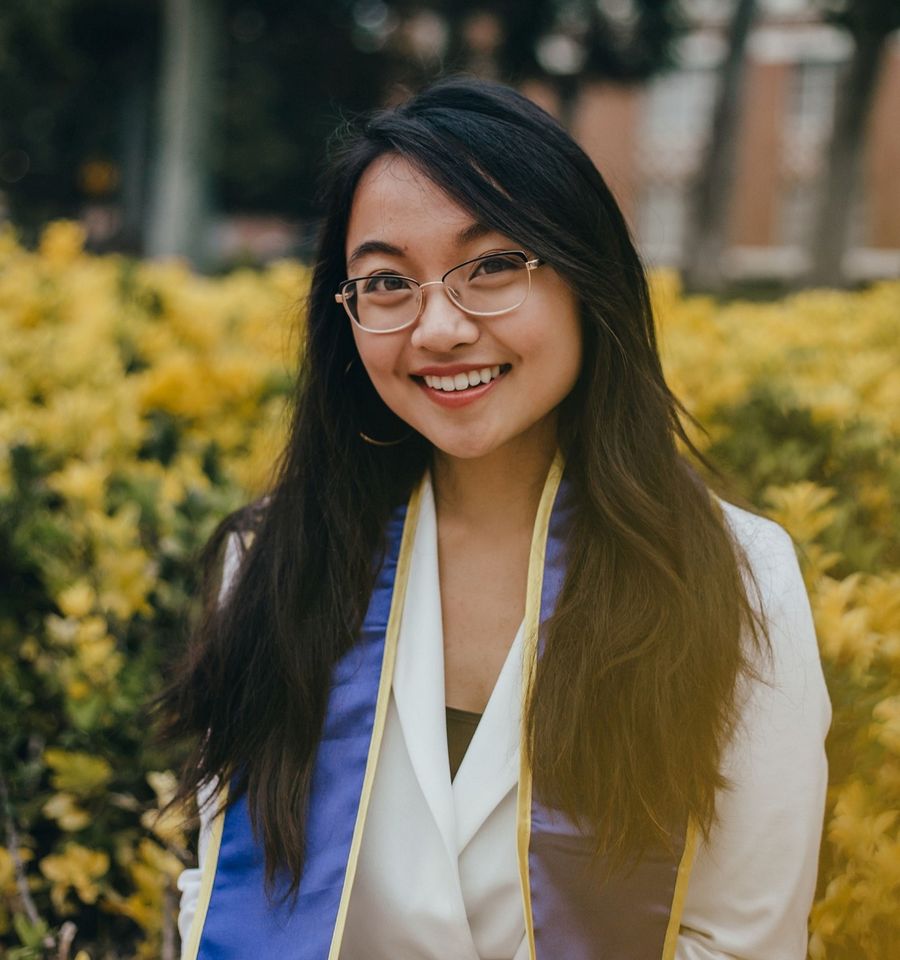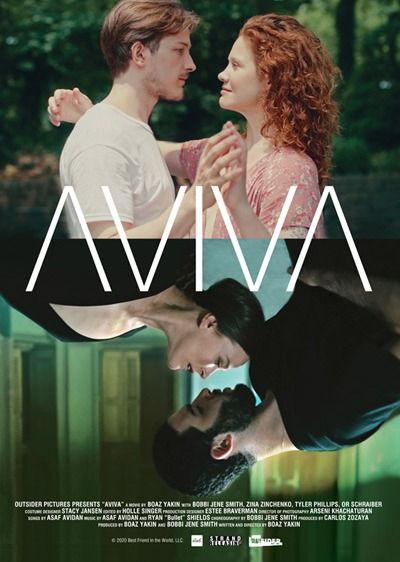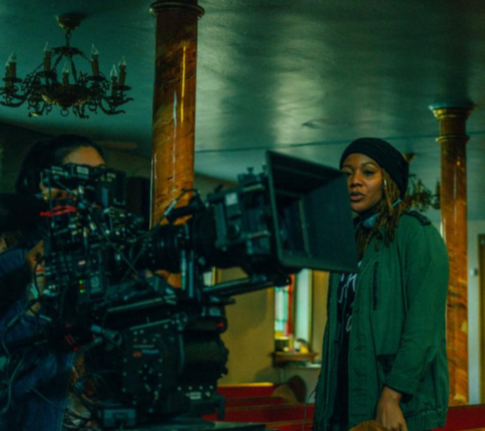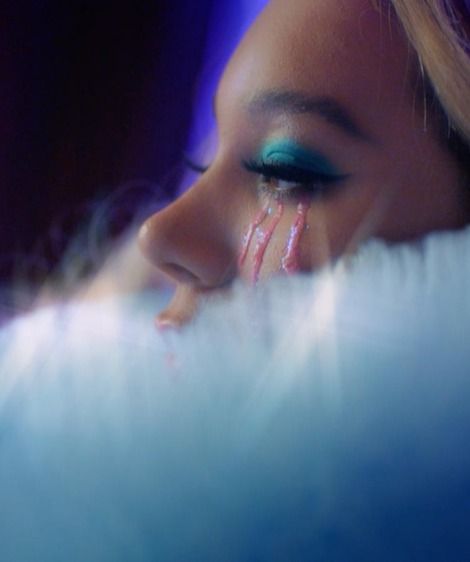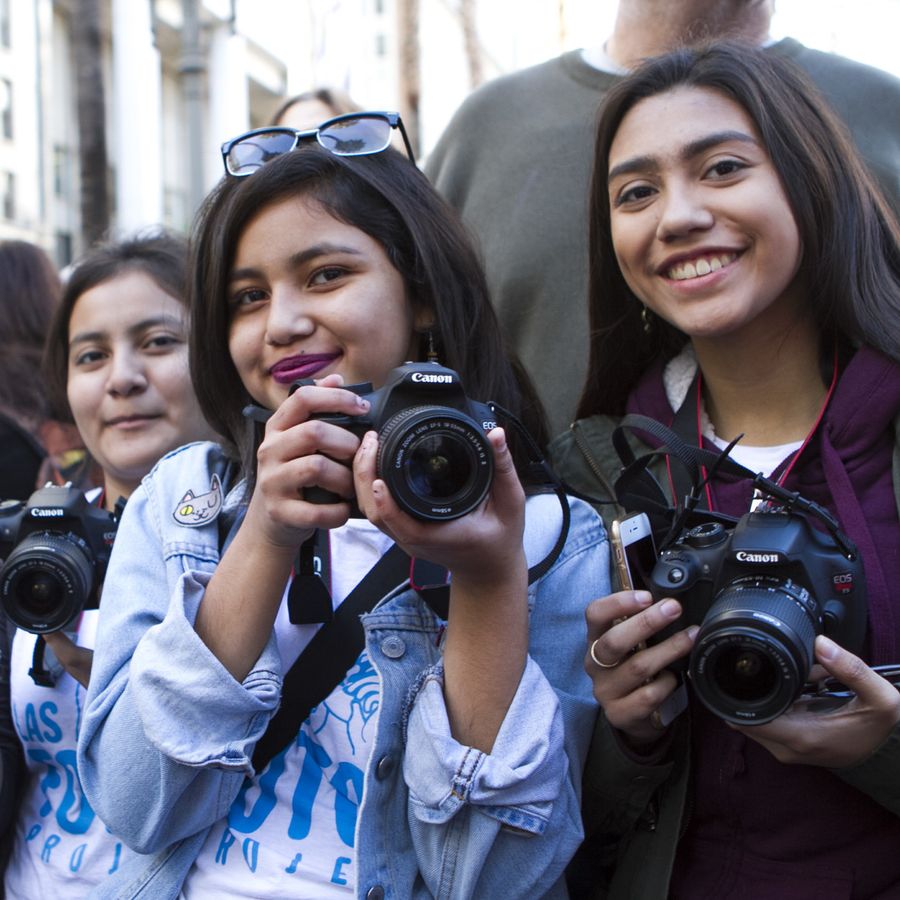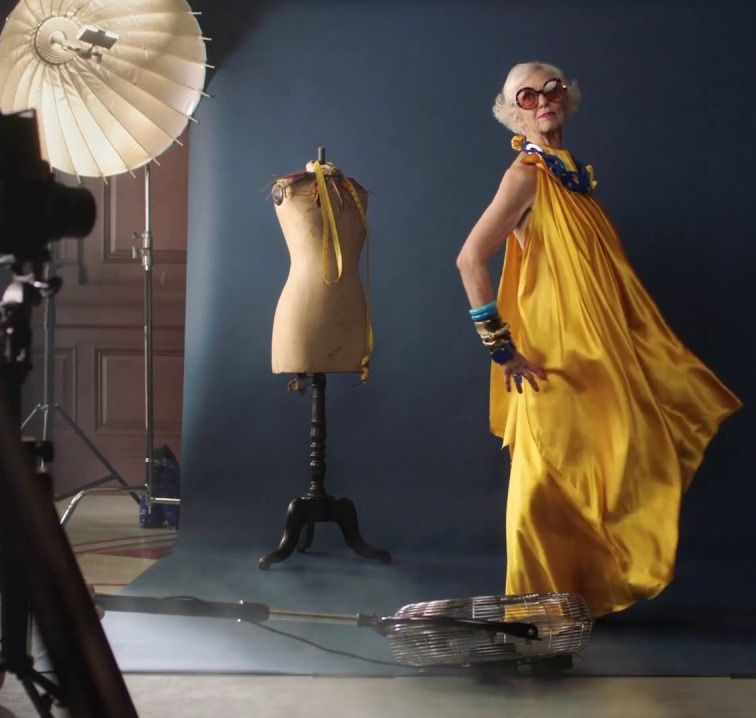All photos credited to: Aviva / Courtesy of Best Friend in the World, Amicalement-votre, and Raise Up Films
When you think of a “dance film” usually that film exists somewhere on the spectrum of heightened glitzy spectacles like Dirty Dancing to competition-based franchises like Step Up. There’s an innate sense of performativity in dance movies—the feeling that the characters are actors catering to an audience, constantly putting their best foot forward. Aviva moves in the opposite direction: professional dancers portray ordinary people, using movement in private settings to express their clamoring for clarity in their relationships and identities. In this way, Aviva proves to be a bold and extraordinarily honest departure from everything the dance film genre ever was.
Aviva tells the story of a romantic relationship that develops into marriage which eventually dissolves and evolves into a deep friendship. The film provides a unique perspective on gender fluidity within the self and breaks the mold of normative heterosexual romances as each of the two principal characters are portrayed interchangeably by men and women actors. Dance sequences are seamlessly interwoven into the dialogue, creating a film that proposes a new type of movement theater that allows for a deeper portrayal of internal and external conflict in a relationship.
While millions around the world stay at home and practice social distancing, the intimate dance sequences of the film feel like a tease of what we all crave: honesty, connection, touch. There’s also a metaphoric beauty in Aviva’s various pantomimed sequences, where actors demonstrate interactions that would otherwise happen in outside settings. Moments like these further underline how when we are stripped away of all materials and outside environments, the one constant that we value most are our relationships with the people we love. Despite how the film is based on director Boaz Yakin’s personal experiences, the outstanding emotional aftershocks of Aviva make it profoundly healing for all audiences.
For such an ambitious film, it is no surprise that the team behind Aviva is a group of equally ambitious artists. Together, their unique skills in storytelling make the film a case-study in harmonious collaboration and the true limitlessness of filmmaking. Here, writer-director Boaz Yakin discusses the process of making Aviva with the brilliant creators who helped him bring the story to life: choreographer and co-producer Bobbi Jene Smith (who also stars in the film) and editor Holle Singer.
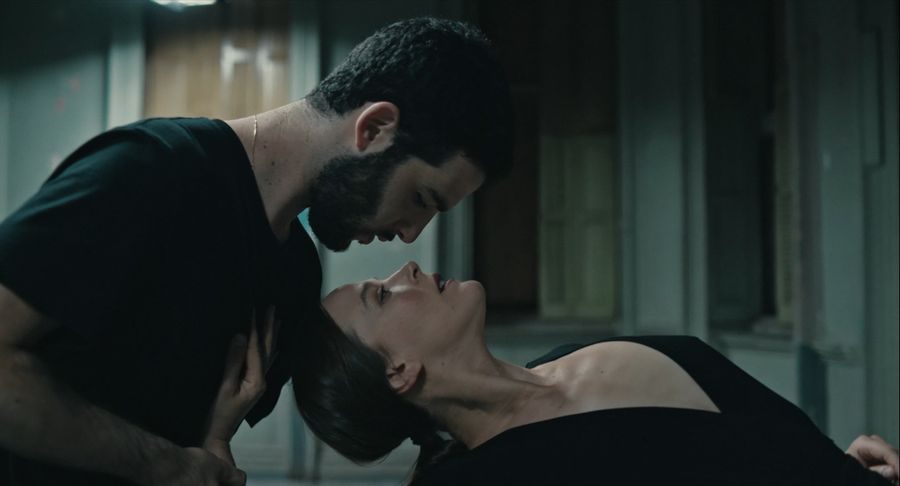
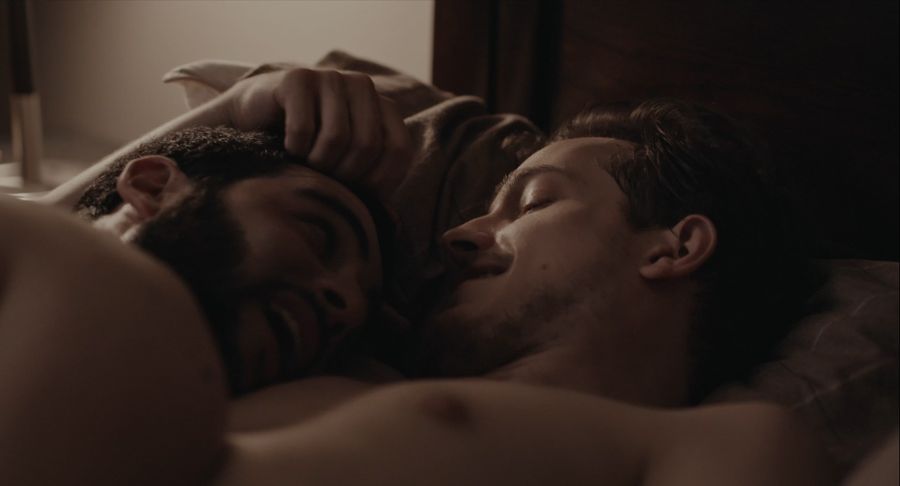
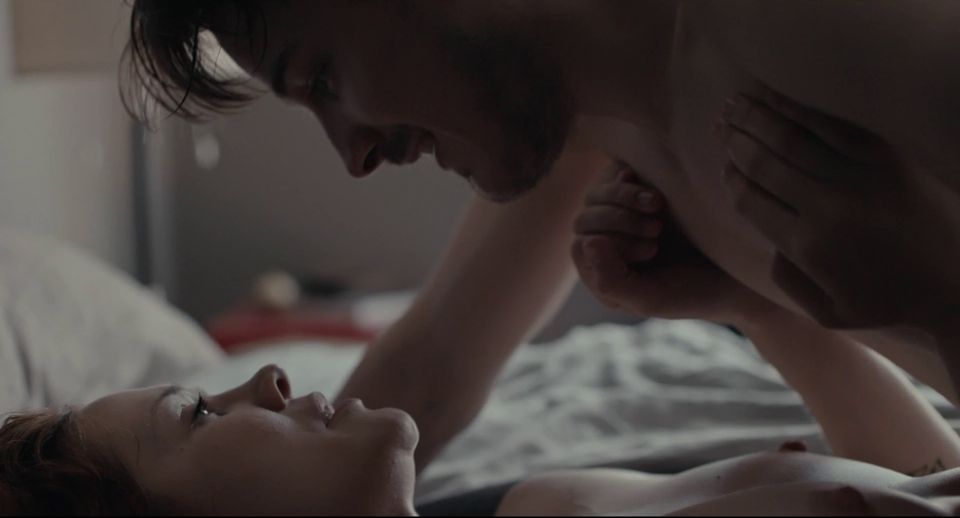
TRANSLATING DANCE FROM SCRIPT TO SCREEN
Boaz, how did you begin to build AVIVA and collaborate with Bobbi?
BOAZ YAKIN: For a while, I had been wanting to creatively explore this idea of the inner male-female dynamic within the self and how split we often are. My parents are mimes and theater directors and I’ve been wanting to explore something that had movement and dance for a while.
While I was writing it, even before I was finished, I was made aware of Bobbi. The documentary about Bobbi, Bobbi Jene, hadn’t even come out yet, but I looked at some of Bobbi’s stuff on the Internet and it was amazing. I got a meeting with Bobbi and I just knew I had to make the movie with her.
Another one of the reasons why I was excited to work with Bobbi was because Bobbi basically cast the movie. Everyone in big roles came through her. These are people who didn’t necessarily have much experience in acting in films, but they had experience in a kind of movement that makes you physically and emotionally expose yourself. It was only because of working with people like that that we were able to make this movie.
Bobbi, when Boaz brought up the idea with you, what were your initial thoughts on the project?
BOBBI JENE SMITH: Well when Boaz first presented the idea, even before I had read the script, I was so intrigued and excited by this idea of using a narrative with dance sequences. The script felt organic, magical and unpredictable. It felt like the film itself was dancing. It didn’t feel that is was forcing a dance into the story. The story that Boaz had written resonated for me in my body; the physical journey the characters were going through…I wanted to experience that ride.
How did you two cooperate to coordinate the unconventional dance sequences that are present throughout the film?
BJS: I think it’s amazing because Boaz wrote out all these dances in the script. And in a way he was already choreographing them. I could see in the script how clearly the dances were there.
BY: That’s really giving me a lot of credit Bobbi. The emotional spots for where the dances were supposed to be were already there, but what Bobbi did with them went far beyond and far deeper than anything I ever imagined and I am so grateful for that. Audiences are used to having a certain “dance sequence” in musicals where people just start dancing and singing and it’s like a “show moment.” Bobbi’s choreography is dance, but also movement theater. I felt that it was really going to give us an opportunity to put a kind of dance into a movie that’s never been seen before.
"The script felt organic, magical and unpredictable. It felt like the film itself was dancing. It didn’t feel that is was forcing a dance into the story."
—Bobbi Jene Smith
What were the biggest challenges and logistical obstacles that you encountered while shooting the film?
BY: This was not a big budget film and we had a remarkably short prep period. I’d say our biggest challenge was the fact that we had a six-week prep period and Bobbi had to prepare 10 major dance sequences in a way that I would also understand how to shoot. Bobbi had to have not just the vision for what the dances were going to be emotionally, but also how they would look on camera.
BJS: I think another challenge was creating choreography that worked in the studio, and that would also translate well in front of the camera. We tried to walk through the dances and we had to find a way to make things interesting and clear. What’s magical about dance is you never really know what is reading and what’s going to land.
BY: We kind of had to trust each other on how the dances would come out because I didn’t know exactly what the dance was gonna look like and she didn’t know how it was going to be shot and how it would look through the camera.
"[The actors] didn’t necessarily have much experience in acting in films but they had experience in a kind of movement that makes you physically and emotionally expose yourself."
—Boaz Yakin
Can you give us an example of a dance sequence that involved a lot of trust between the two of you during the planning process?
BY: There was this crazy half-pantomime, half-dance sequence about a trip to LA that I knew was going to be one long shot. We had done one idea session where Bobbi walked through it with my Dad, who’s a great Mime and movement teacher. But I had no idea what was going to come. Bobbi didn’t show the dance to me.
BJS: I couldn’t! [laughs] It was a new challenge for me and I was nervous/insecure of the final outcome. I could see it in my imagination but I didn’t know if I would physically and emotionally live up to it! I knew that once the camera was rolling, I would be ready to go for it. Something about the fearlessness and freshness of being in the moment was going to make it work.
BY: We were on set and I thought, “Holy shit, what is she going to do?” The first one or two takes that she did, I think she was so energized that it was like…bananas. But then Bobbi did a third take…and all of us standing behind the camera had hair standing up on our arms. It was like an Olympic floor performance where as you get to the end, you’re like, “It’s so amazing, is it going to land?” and then she stuck the landing. Tyler, who plays male Eden, was behind the monitor with me and he literally jumped up after that take.
Were you ever reluctant to show the levels of vulnerability that are in this piece?
BJS: There’s a huge strength in revealing and virtuosity in vulnerability. And I feel like this film gave the space and strength to do just that. Boaz created the safety net for people to really reveal themselves. If it comes from a truthful and deep place.
BY: Even when I was writing this, I knew I wanted this to be a very open film, physically, sexually, emotionally. Everything about this movie was meant to be open and honest.
I know that a lot of women were involved in this production, making decisions behind the scenes. What was the gender distribution of your set and how did working with more women impact the final film?
BY: It was 50/50 women and men. I’ve worked with women producers and production designers before so working with women is something that I’m comfortable with and excited about.
For example, Aviva's character directs a movie within the movie. I thought it would be great if her film was actually directed by a woman who has a different style and feel from the rest of the movie. I asked Alma Har'el if she had any recommendations and she brought Erin Li to my attention as a director she knew through Free the Work. I explained the elements that I was hoping Erin would capture and then Erin went off and shot her own concept and interpretation of that with her team. It turned out beautifully. It has its own personality and style and still fits perfectly into the movie. We were only able to use about 30 seconds of it, as intended, but people can watch the full four-minute piece on Erin's FREE THE WORK profile, titled, "The Beginning and The End of Everything."
I’ve been making movies for quite a while. And I feel like bit by bit, inclusivity has been expanding. I’d like to see it more.
That's amazing. We need more directors that can advocate for people like that.
BJS: Agreed.
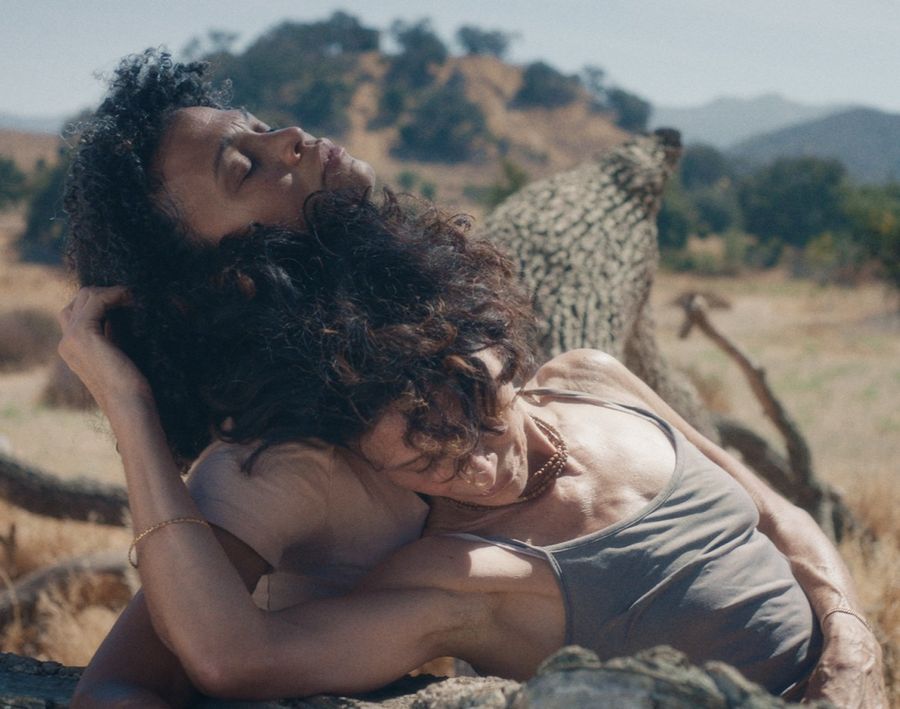
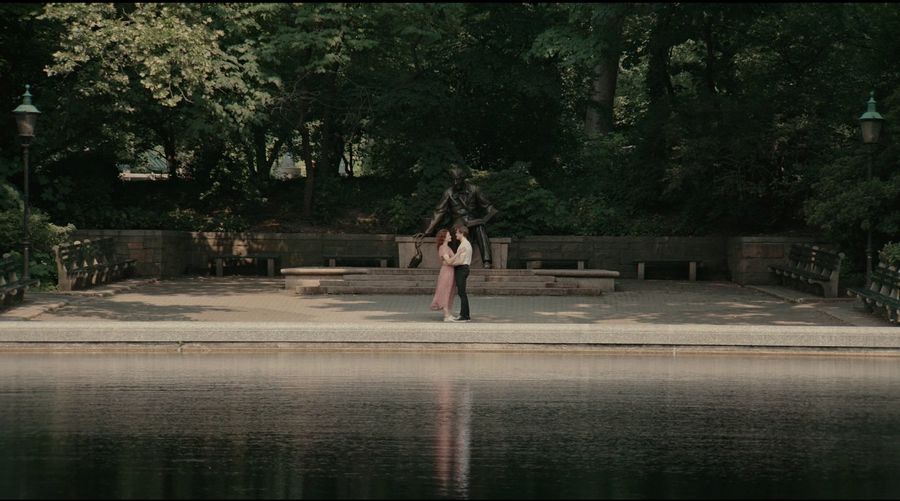
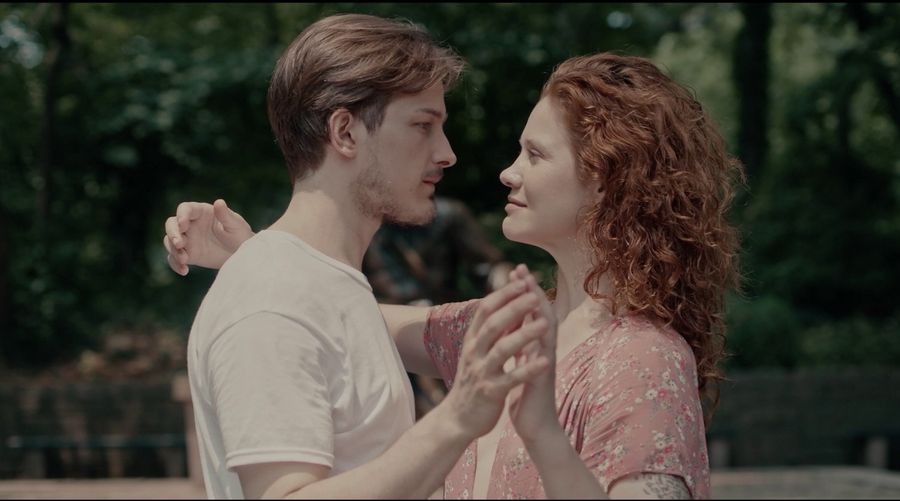
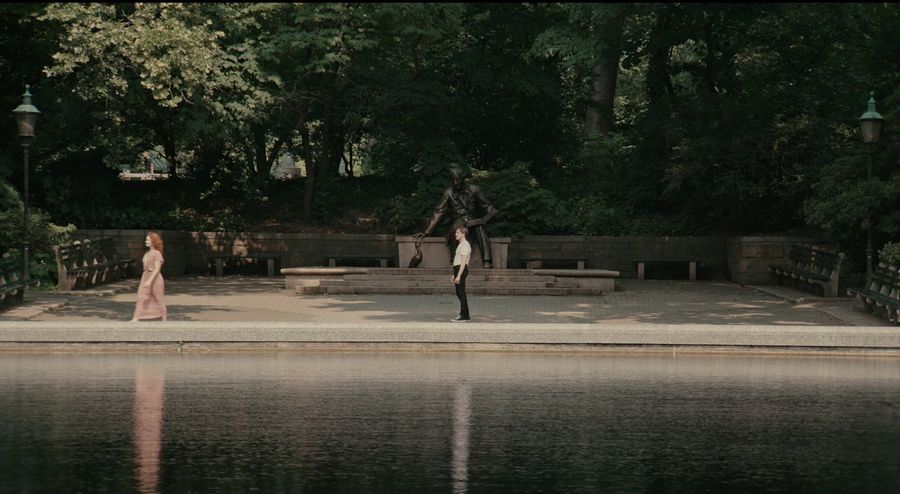
CRAFTING EMOTION IN THE EDIT
As an editor, how did you become involved in the project and what were your initial reactions to the story?
HOLLE SINGER: Well, I’ve known Boaz for years. In fact our moms were friends and collaborators. So I’ve known about Boaz probably since I was 20 years old. We knew each other for years and I’ve always wanted to work with him.
He sent me the script for Aviva and honestly by the time I got to page 3, I was so blown away and I was just like, “I want in.” I thought the script was really timely in terms of gender and also how complicated each of us can be. We have divided selves at odds with each other, and I feel like AVIVA was so smart and bold for discussing that. There were a lot of things that drew me to it, and I blew through the script. I remember reading the script and thinking, “This is so ambitious.”
That brings up a good point. This film is so ambitious and complicated in terms of how the genders of the characters shift between scenes. Did you have to do any extra preparation to edit this film?
HS: I’m kind of a neurotic preparer [laughs]. I did a lot of research. This was also my first narrative feature so I was online looking at every editor talking about their approach. What’s funny is that once I started, I wound up pretty much working the way I always work with my music videos, short films, and commercials. I thought it would be this huge technical departure, but it wasn’t. Boaz and I worked very closely together. He was incredibly decisive and knew exactly what he wanted.
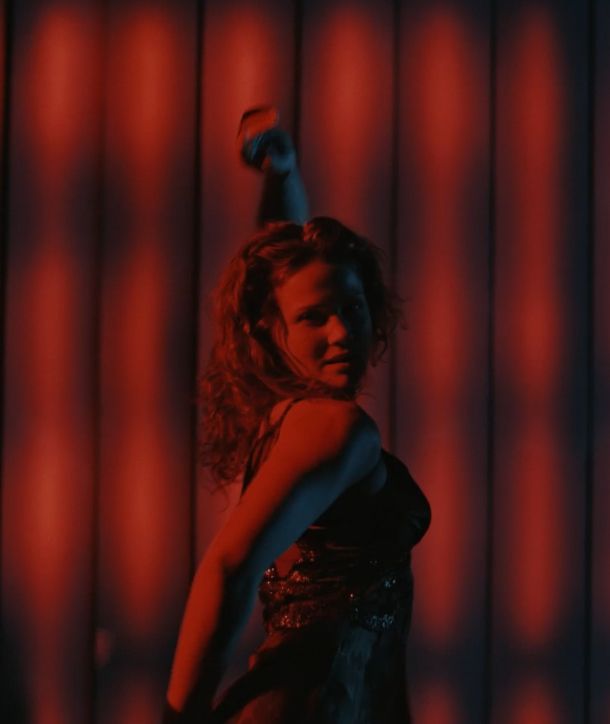
Did your experience in music video help with doing the dance sequences?
HS: I love editing dance and anything with movement in general, and I loved the music, so editing AVIVA felt really fun. The choreography is incredible. Bobbi is truly an artist. Boaz collaborated with so many artists so it was really exciting to cut the stuff.
I remember seeing the bar scene footage for the first time. It was almost hard to cut. There was so much good footage. It definitely helped to have worked with music videos before.
Were Bobbi and Boaz with you while editing most of the time?
HS: Boaz was in the room almost all the time. We edited really closely together. Bobbi and Orr came in periodically for a few days, especially to look at the dance scenes and make sure they were happy with how they were being cut.
How long did this process take?
HS: We had a rough cut within three months, and that rough cut didn’t change that much. We maybe did a few more weeks after of changes, but most of it was cut in 12 weeks. For a long-form piece, this was absolutely the fastest I’ve worked before.
How did you add your personal touch to the film as an editor?
HS: This was such an ambitious film intellectually and there are times when it’s not the easiest film to understand. And I wanted to make sure that the viewer would feel something, even when they wouldn’t understand exactly what was happening in the scene. Boaz was okay with the idea that some people are gonna get it and some people aren’t. I wanted people to at least get it on an emotional level. I referred to Eternal Sunshine of a Spotless Mind. That’s a very intellectual, ambitious film, but you still felt so much. I looked at that film to see what Director Michel Gondry did with the sound and the cutting, and how they made a complicated story emotionally engaging. Even though at times you can’t follow it, you’re still interested and emotionally involved.
And I think that’s so perfect for a movie about love, where you don’t understand everything about it, but you know you feel something special. Were you editing alongside the script in order to decide what moment the character would shift?
HS: We stayed very close to the script. The vision that was in the script is what we ended up with. But I always like to know the director’s perspective on a scene before we begin. I ask, “What do you want this to feel like?” so I can get a vision in my head, and then I look at the footage. The process is very back and forth, live discussion.
Did that involve a lot of heart-to-hearts? Was the editor-director relationship a personal relationship too?
HS: There were times! It’s pretty intense material, so you’re bound to have intense discussions about relationships.
Do you have any tips for filmmakers on how to work with editors? What was the most helpful thing for you through this process?
HS: I like to know what the director likes to see so that I don’t go too far astray. I want to know what your favorite films are and films that you’d feel good about being compared to. Because I like to get a sense of the director’s sensibility. And then I like to mine my own experiences for what films have moved me.
I think ideally it’s nice to have space so that when you know the director’s sensibility and you know the important elements of a scene, you can have the ability to play. I personally love accidents and getting surprised in the edit room.
"I referred to Eternal Sunshine of a Spotless Mind. That’s a very intellectual, ambitious film, but you still felt so much. I looked at that film to see what Director Michel Gondry did with the sound and the cutting, and how they made a complicated story emotionally engaging."
—Holle Singer
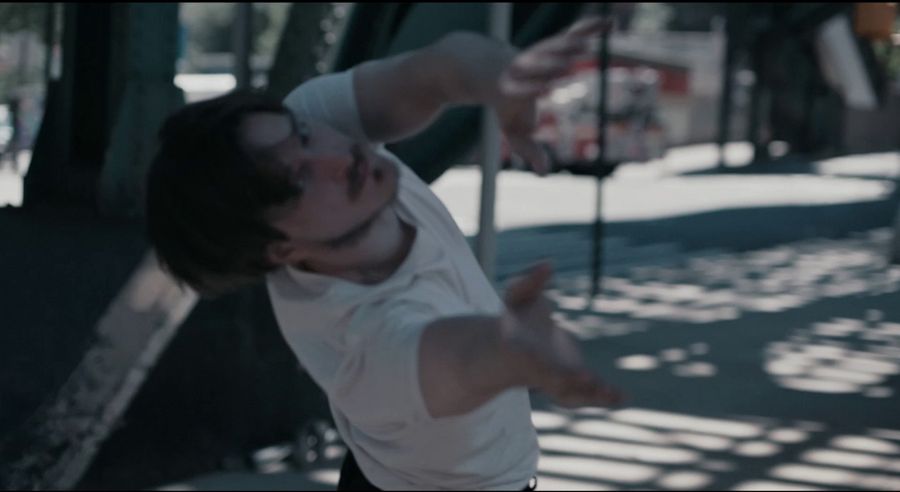
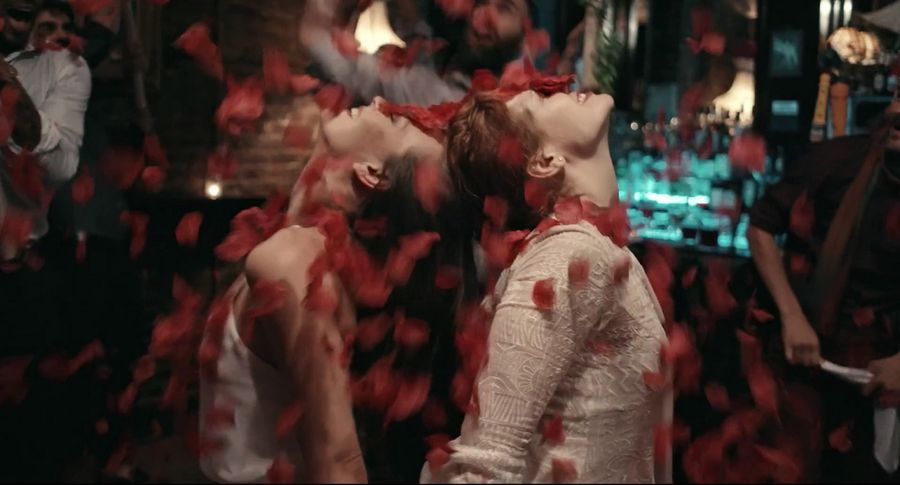
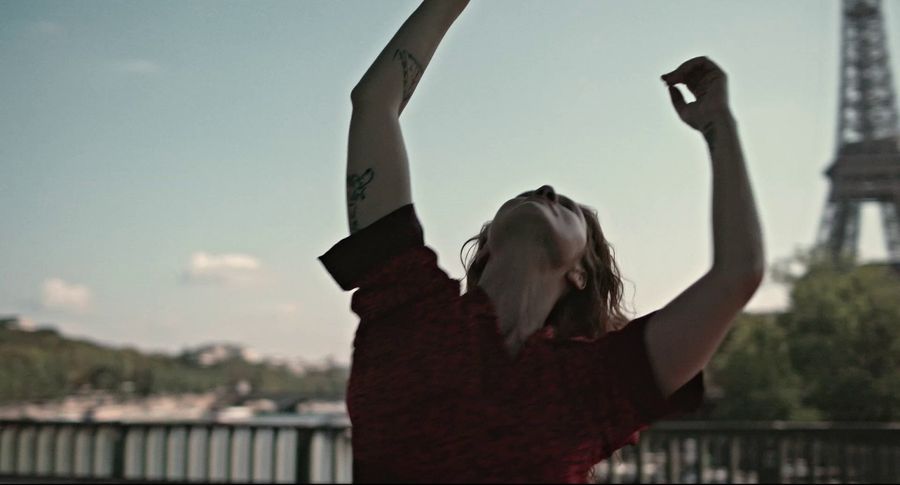
LOOKING TO THE FUTURE OF AVIVA AND DANCE FILM
Some filmmakers reading this may be wondering: How does someone even begin to direct a dance film and what kind of people do you need on your team to pull it off?
Boaz, how did working with Bobbi and Holle help you make Aviva?
BY: Look, when you’re doing a film where movement is so important, you have your script and you have your skills as a director. But the person that’s doing the choreography is also important. Bobbi’s vision—it’s an overused word, but her vision and her way of approaching the script, her creativity, and her way of approaching movement affected every aspect of the movie. You have to know that you’re working with somebody whose creative and artistic ideas enhance everything you’re doing.
Holle is a really brilliant artist who is a true master in editing commercials and music videos and movement. She hadn't done many dramatic features, so her confidence in storytelling and sense of capturing genuine moments in unconventional ways were a huge and welcome surprise. Holle helped me with clarity and focus in what could sometimes be a confusing approach, with all these actors playing the same characters. And her ability to cut the dance sequences—which are so important to the movie—was really amazing. I was lucky to get her for this…and if I make another feature in the COVID World, I would hope we can work together again.
Holle and Bobbi, what were you most excited to add to this film? What are all of your hopes for Aviva going forward?
HS: I am most excited for the film to get out in the world and have an audience. To see how people react and respond. I wonder what kind of impact Aviva is going to have and how it might touch people with what it adds to discussions of gender.
BJS: I am so excited to share with the world all these amazing people that I’ve been lucky enough to dance with. It was really exciting to work with my peers in this new way and to be able to make something with Boaz that felt alive and new for all of us. A lot of these dancers haven’t even danced on camera before in this way and that felt very special. I feel like Boaz and I created the space for the people in the film to really be able to give themselves and that’s so important to me. That’s why I want to continue to make things—to open up a space for people to really create and to connect to their madness…and all their contradictions.
BY: Whatever my personal desires are in terms of getting this story out there, right now, 80% of what I’m excited about, in terms of getting this movie out there, is people finally getting to see these people and what they do.

"I feel like Boaz and I created the space for the people in the film to really be able to give themselves and that’s so important to me. That’s why I want to continue to make things—to open up a space for people to really create and to connect to their madness…and all their contradictions."
—Bobbi Jene Smith
Boaz Yakin
Boaz Yakin (writer, director, producer) is know for Fresh, his first feature, which won the Filmmaker's trophy at the 1994 Sundance Film Festival, as well as prizes in the Tokyo Film Festival and other festivals throughout the world. He followed with A Price Above Rubies, starring Renée Zellweger. He has since alternated between studio movies such as Remember the Titans, starring Denzel Washington, Uptown Girls, Safe, Max, and personal independent movies such as Death in Love, which premiered in Sundance in 2011, and more recently, Boarding School. He has also produced an equally eclectic variety of movies, such as Eli Roth's Hostel series, and documentaries such as Alma Har'el's award-winning, Bombay Beach. Some of these movies were made for love, others to keep a roof over his head.
Aviva is all love.

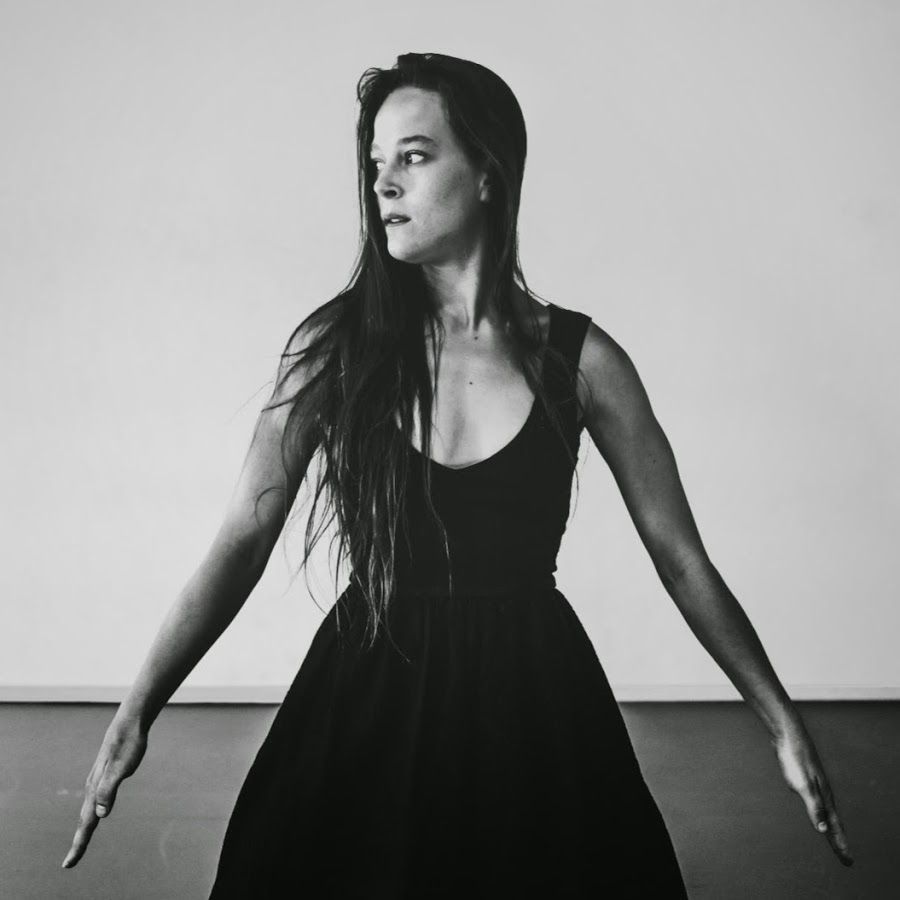
Bobbi Jene Smith
Bobbi Jene Smith was born in Centerville, Iowa. From 2005-2014 she was a member of the Batsheva Dance Company under the artistic direction of Ohad Naharin.
She is an alumnus of the Juilliard School, North Carolina School of the Arts, and the Royal Winnipeg Ballet School. Her choreography has been presented by The Batsheva Dance Company, CORPUS – The Dance Laboratory of the Royal Danish Ballet, The Martha Graham Dance Company, The Juilliard School, PS122 COIL Festival, A.R.T, The Israel Museum, Luminato Festival, LaMama, Sacramento Ballet, and UNC Chapel Hill. In 2017 she became a founding member of the American Modern Opera Company (AMOC). Smith’s film and video work includes Annihilation directed by Alex Garland, MA directed by Celia Rowlson-Hall, and Yossi directed by Eytan Fox. The documentary Bobbi Jene which follows Smith’s trajectory of leaving a dance company to create her own work, swept the Tribeca Film Festival, winning best documentary, best cinematography, and best editing in 2017. In 2018, Smith stars in and choreographed the feature films Mari directed by Georgia Parris, which premiered at BFI, and Aviva directed by Boaz Yakin. Smith has been a certified GAGA teacher for the past 13 years and has taught Ohad Naharin's repertory in schools and universities around the world. She is part-time faculty at the Juilliard School, and guest teaching at NYU and UArts.
Holle Singer
Holle Singer did not go to film school. She studied psychology. She loved psychology. Still Does. She took a video class in her senior year of college that changed the course of her life.
Holle started as a receptionist at Consulate. Soon she was cutting music videos for artists like Beyonce, Justin Timberlake and The White Stripes. She got award nominations and sometimes awards. She made partner and spent the last two decades editing commercials for fashion houses like Dior, Louis Vuitton, and Givenchy to product driven spots such as Veuve Cliquot, Fiat, and Warby Parker.
Documentary work includes “House of Z”, a feature film on fashion designer, Zac Posen, which premiered at the 2017 Tribeca Film Festival and 2012 Juno Award winning documentary “Look At What The Light Did Now” on indie musician, Feist. Short films include 2019 The Big Break, directed by Philip Andelman and starring Justin Bartha, Paul Lieberstein and Mandy Moore as well as 2006 Sundance Jury Prize Short Film winner “Bugcrush” which screened at Cannes that same year. Holle’s work has been nominated for awards such as the MTV’s VMA, MVPA, AICP and Sundance Jury prize and is part of the permanent collection at MoMA.
